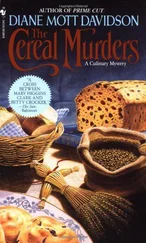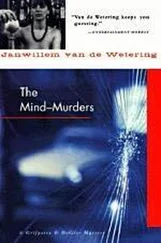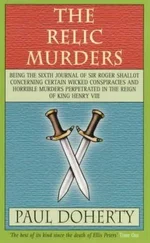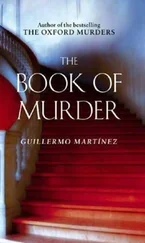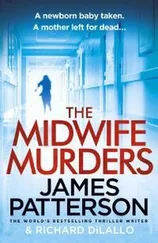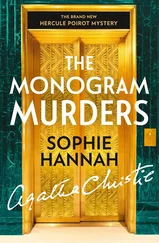“Frankie was extremely shy, and this was the only time he confided anything of a personal nature: he told me he regretted never having married and, with a sad smile, he said he hadn’t done much with his life, but he had drawn and manipulated logical symbols for forty years. He was sure he would never find a better subject than himself for his experiment. He was convinced that it would somehow be possible to read the coded residue or substratum that he’d been looking for in the symbols that he would draw. In any case he didn’t intend to be around when they came for his other leg. But he had one last problem to solve, and that was how to ensure that the bullet didn’t cause too much damage, that metal shards didn’t reach the nerve circuits affecting motor function. I’d become fond of him over the years and I told him that I wasn’t prepared to help him with his plan, so he asked if I’d be there to read the symbols, in the event that he succeeded.”
We both suddenly noticed the hand tense spasmodically, gripping the pencil, as if receiving electric shocks. Fascinated and horrified, I watched the pencil move slowly and clumsily across the page, but Seldom seemed not to pay much attention.
“He starts writing at this time of day,” he said, not bothering to lower his voice, “and he continues almost all night. Anyway, Frankie was highly intelligent, he found the solution. An ordinary gun, even a small-calibre one, would leave too great a margin of error because of possible bullet fragments. He needed something that could penetrate the skull and reach the brain cleanly, like a small harpoon. This wing of the hospital was undergoing building work at the time and it seems he got the idea from a workman with whom he had a conversation about tools. In the end, he used a nail gun.”
I leaned forward to try to make out the confused marks appearing on the paper.
“Until recently his handwriting was perfectly legible, but it’s becoming increasingly hard to read,” said Seldom. “In fact he’s only writing four letters, over and over again. The four letters of a name. All these years Frankie has never drawn a single logical symbol or number. The only thing he writes, endlessly, is a woman’s name.”
Could we go out into the corridor for a moment? I need a cigarette,” said Seldom. He tore the page Frank had just written from the pad and, after glancing at it, threw it in a wastepaper bin. We left the ward quietly and walked down the empty corridor until we found an open window. We watched as a male nurse slowly wheeled a trolley towards us. As he passed, I saw a body shrouded in a sheet, with its face covered. Only an arm remained outside. There was a tag hanging from the wrist with a name on it and underneath I could just make out some numbers which may have been the time of death. The nurse skilfully manoeuvred the trolley, turning and sliding it through a narrow doorway with ease.
“Is that the morgue?” I asked.
“No,” said Seldom. “There’s a room like it on every floor. When a patient dies, the body is immediately moved out of the ward so as to free up the bed. The doctor in charge of the floor comes and confirms that the patient is dead and writes out a certificate. The patient is then transferred to the hospital morgue, which is in the basement.” Seldom nodded in the direction of Frank Kalman’s ward. “I’m going to stay and keep Frankie company a little longer. It’s a good place to think. Well, as good as any. But I’m sure you’d like to visit the X-ray department,” he said with a smile. When he saw my surprise, his eyes twinkled and his smile grew even wider. “ Oxford ’s a small place, you know. Anyway, congratulations, Lorna’s great. I met her during my convalescence. She lent me a good number of her crime novels. Have you seen her collection?” He raised his eyebrows in awe. “I’ve never known anyone with such a fascination with crime. You have to go to the top floor,” he said. “Take that lift there on the right.”
The lift went up with a heavy hydraulic moan. I walked through a maze of corridors, following the arrows to the X-ray department, until I came to a waiting room where a man with a faraway look was sitting, a book lying forgotten on his lap. Through a glass partition I caught sight of Lorna in her uniform, leaning over a bed. She seemed to be patiently explaining something to a child. I moved a little closer to the glass, but couldn’t quite bring myself to interrupt her. She placed a teddy bear on the pillow. The child in the bed was a pale little girl of about seven, with frightened but alert eyes and long ringlets spread out over the pillow. Lorna spoke again and the child hugged the teddy bear tightly. I tapped gently on the partition. Lorna looked up, laughed with surprise and said something I couldn’t hear through the glass. She indicated the door at the side and then, to the child, mimed, with an imaginary racket, that I was her tennis partner. She opened the door, gave me a quick kiss and asked me to wait for a moment.
I went back to the waiting room. The man was now reading his book. He had stubble on his chin and reddened eyes, as if he hadn’t slept in a long time. With some surprise, I made out the title of his book: From the Pythagoreans to Jesus. The man suddenly lowered the book and met my eyes.
“I’m sorry,” I said, “my attention was drawn by the title of your book. Are you a mathematician?”
“No,” he said, “but since you’re interested in the title I assume that you are.”
I smiled, nodding. The man stared at me with disconcerting intensity.
“I’m reading backwards,” he said. “I want to know how things were in the beginning.” Again, he fixed me with his slightly fanatical gaze. “I’m discovering surprising things. For instance, how many sects, or religious groups, would you say there were in Christ’s time?”
I assumed it would be polite to venture a very small number but, before I’d had a chance to answer, the man went on:
“There were dozens and dozens,” he said. “The Nazarenes, the Simonites, the Phibionites. Peter and the Apostles were only a tiny group. A tiny group among a hundred. Things could easily have been very different. They weren’t the most numerous, or the most influential, or the most advanced. But they had a shrewd streak that made them stand out from the rest; a single idea, a touchstone that enabled them to pursue and eliminate all other groups until they were the only ones left. While everybody spoke only of the resurrection of the soul, they promised the resurrection of the flesh as well. Coming back to life with one’s own body. An idea which already sounded ridiculous and was already primitive in those days. Christ rose from the tomb on the third day and asked to be pinched and ate some grilled fish. Now, what happened to Christ during the forty days that he was back?”
His hoarse voice had the somewhat fierce vehemence of the autodidact or the recently converted. He was leaning towards me slightly and an acrid, penetrating smell of sweat wafted from his crumpled shirt. I moved back involuntarily, but it was difficult to escape his fixed stare. I shook my head in appropriate ignorance.
“Exactly,” he said. “You don’t know, I don’t know, nobody knows. It’s a mystery. All he seems to have done is be pinched and name Peter as his successor on earth. Rather convenient for Peter, don’t you think? Did you know that until then corpses were simply wrapped in shrouds. There was no notion of preserving the body. It was, after all, what religion considered the weakest, most ephemeral part, the part vulnerable to sin. Well, nothing but a few wooden coffins separates us from those times. There’s a whole world of coffins beneath this one. On the outskirts of every city there’s another underground city of coffins, neatly lined up, lids affectingly closed. But we all know what happens inside. In the first twenty-four hours, after rigor mortis, the body starts to dry out. The blood stops transporting oxygen, the cornea turns cloudy, the iris and pupils become distorted, the skin shrivels. On the second day, the large intestine starts to putrefy, and the first green patches appear on the skin. The internal organs have shut down, tissues become soft. The third day, as decomposition progresses, gas bloats the abdomen and the limbs take on a green, marbled appearance. A compound of carbon and oxygen emanates from the body, the same penetrating smell you get from a steak left out of the fridge too long. Corpse fauna, including necrophagous insects, begins to feed on the body. Each of these processes, each exchange of energy, involves an irreversible loss; there is no way a vital function can be recovered. By the end of the third day, Christ would have been a monstrous piece of waste incapable of sitting up, foul-smelling and blind. That’s the truth. But who’s interested in the truth?
Читать дальше




